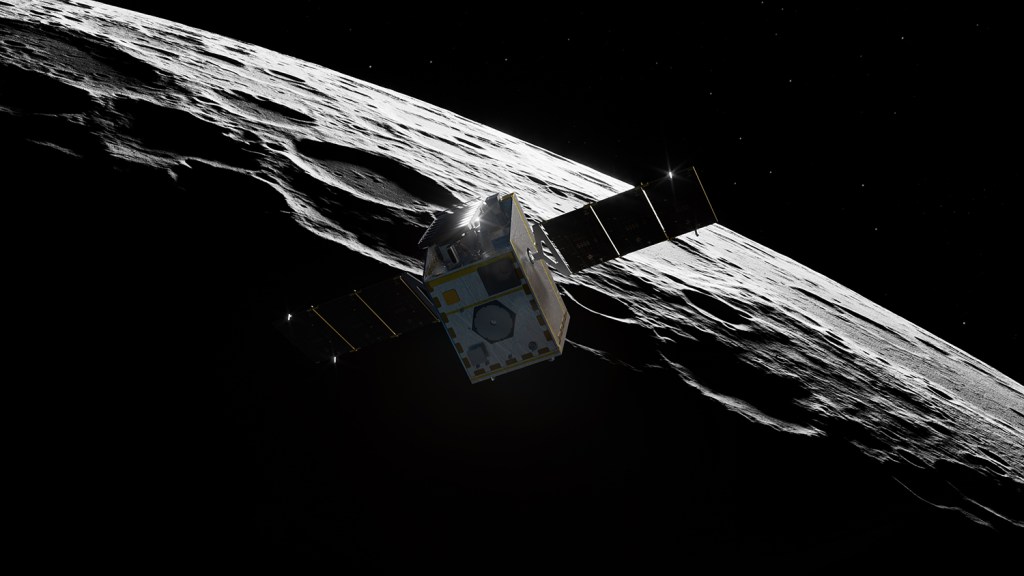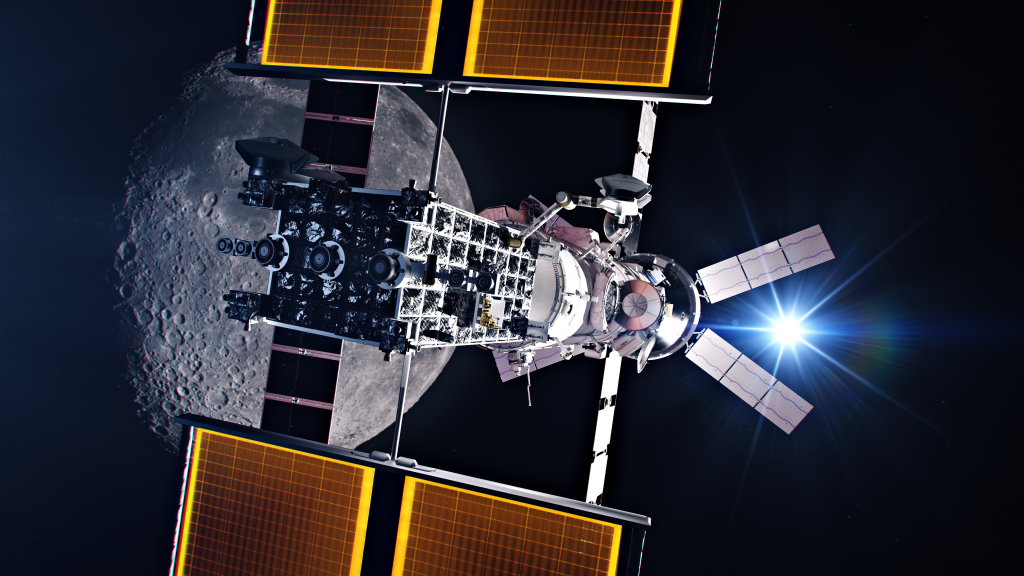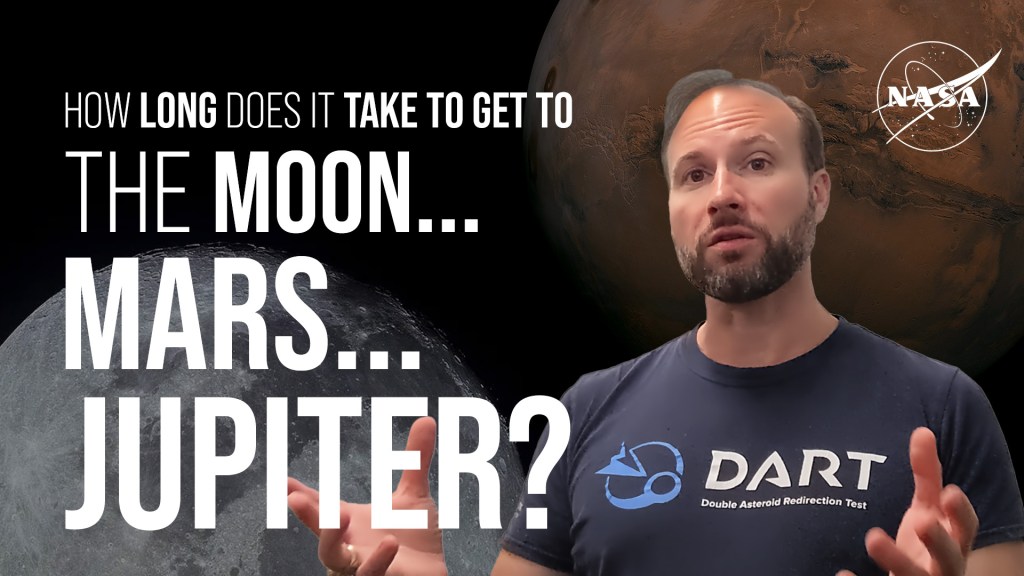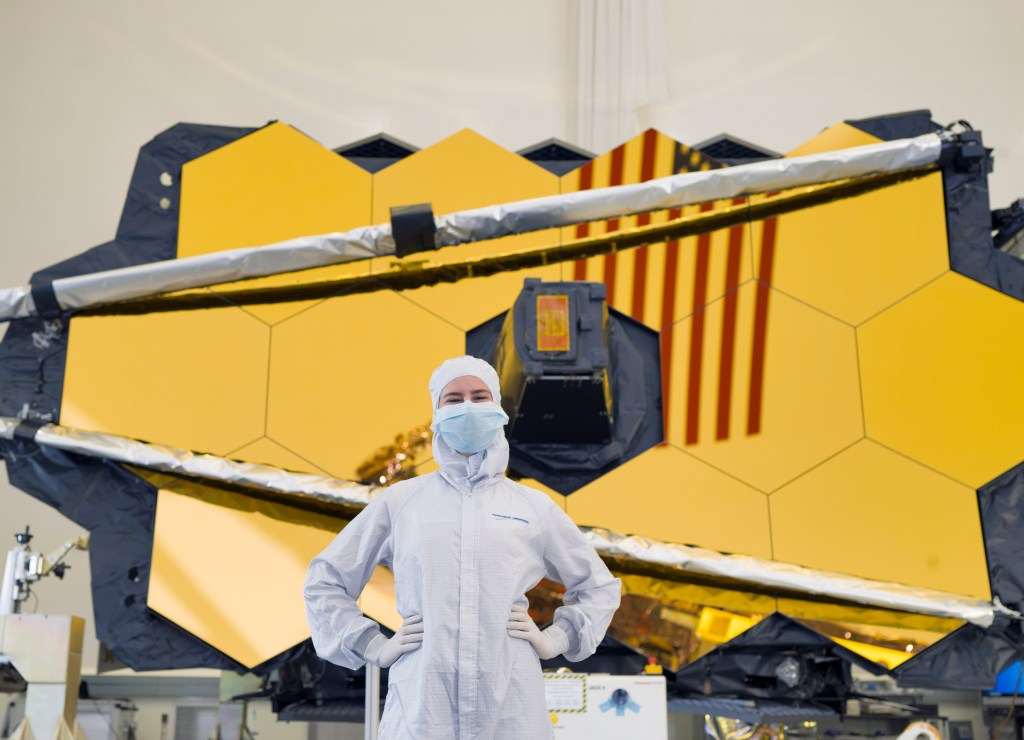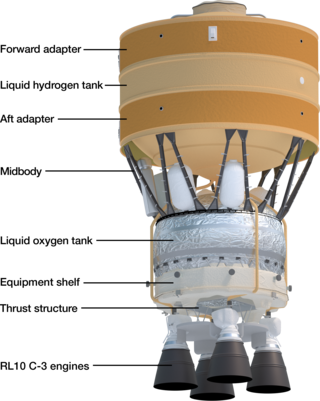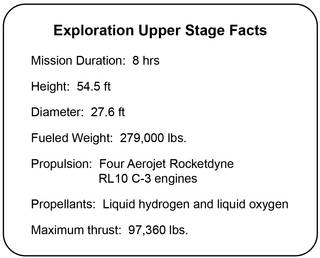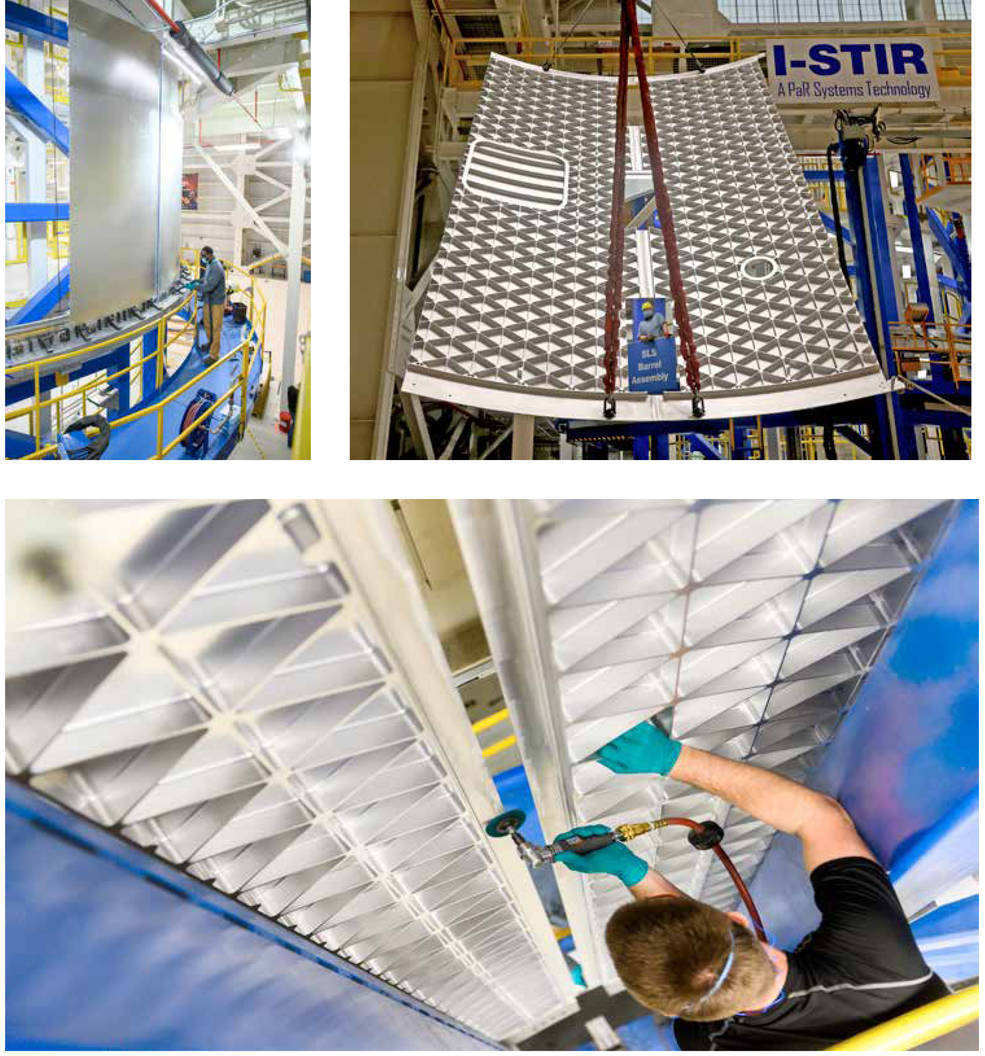Space Launch System Exploration Upper Stage (EUS)
The Exploration Upper Stage (EUS) will enable the Space Launch System (SLS) rocket’s future configurations to launch NASA’s most ambitious human and robotic deep space missions. The EUS will serve as the upper, or in-space, stage for all Block 1B and Block 2 SLS flights in both crew and cargo (with payload fairing) configurations.
SLS is an advanced super heavy-lift rocket that serves as the backbone for the agency’s Artemis human exploration missions beyond Earth orbit. Compared to available commercial rockets and the initial SLS Block 1 rocket, the EUS enables SLS Block 1B and Block 2 to send heavier and larger payloads to deep space, provides daily launch opportunities for flexibility in mission execution, and incorporates many features for astronaut safety.
Built by Boeing at NASA’s Michoud Assembly Facility in New Orleans, the EUS is a modern design that leverages state-of-the- art tools and processes already developed and in place for manufacturing the SLS core stage. The core stage with four RS-25 engines and the twin solid rocket boosters provide the power to send SLS along with its crew and/or cargo to Earth orbit. After reaching Earth orbit, the EUS continues the job of sending Orion and cargo to the Moon or other destinations.
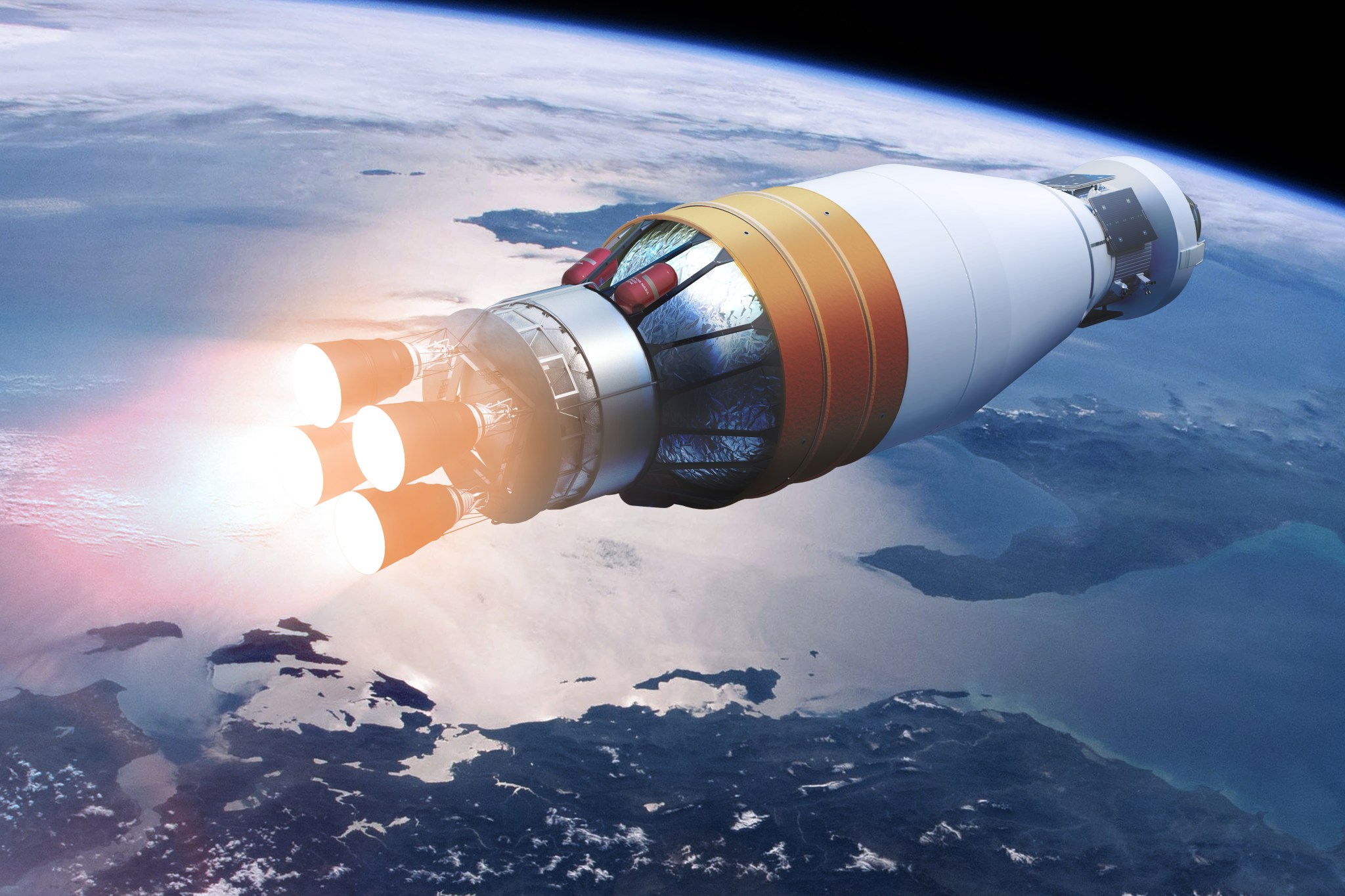
The Exploration Upper Stage (EUS) is a four-engine liquid hydrogen/liquid oxygen in-space stage on the Space Launch System (SLS) Block 1B and Block 2 rockets. The EUS provides numerous advan- tages, such as increased payload mass to deep space destinations, daily launch opportunities, and enhanced safety features.
Credits: NASA
The EUS replaces the single-engine Interim Cryogenic Propulsion Stage (ICPS) that serves as the in-space stage on the initial SLS Block 1 configuration of the rocket. With its larger liquid hydrogen and liquid oxygen propellant tanks feeding four Aerojet Rocketdyne RL10 C-3 engines, the EUS generates nearly four times the thrust of the ICPS, providing unrivaled lift capability to the SLS Block 1B and Block 2 rockets and making a new generation of crewed lunar missions possible.
SLS Block 1B will increase payload to the Moon by 40%, from 27 metric tons (t) or 59,525 pounds (lbs.) with Block 1 to 38 t or 83,776 lbs. in the crew configuration and 42 t or 92,594 lbs. in the cargo configuration. In addition, the Block 1B and Block 2 rockets in the crew configuration can carry a large-volume 10 t (22,046 lbs.) co- manifested payload to the Moon, along with the Orion spacecraft and crew, as part of their overall capability. Launching crewed missions along with other large payloads enables multiple large scale objectives to be accomplished in a single mission.
Human involvement with space systems, such as habitats, improve mission success of safely deploying and using these systems in space or on the surface of the Moon or Mars.
Designed from the ground up to support human missions to deep space, the EUS engines will burn on ascent to help place Orion in a 100 x 100 nautical mile (nmi) circular orbit to avoid the dense micrometeroid and orbital debris field in lower orbits, allowing astronauts to safely stay longer in Earth orbit and check out critical systems before heading to the Moon. The EUS also gives mission operations the flexibility of daily or near-daily launch windows to the Moon, depending on the desired orbit. With Orion in a higher parking orbit and the additional energy available from the EUS, the stage can perform a burn to put Orion on a lunar trajectory one or more times per day.
The EUS for SLS Block 1B and Block 2 is a powerful, four- engine upper stage comprised of eight major components.
Credits: NASA
The EUS is composed of eight major elements: forward adapter, liquid hydrogen tank, aft adapter, midbody, liquid oxygen tank, equipment shelf, thrust structure, and RL10 C-3 engines. The four RL10 C-3 engines provide redundancy so the stage can insert Orion on its trajectory with only three engines in the event there is an issue with one engine. Exposed sections of the EUS are enclosed by an interstage structure during launch.
In contrast to the Block 1 rocket, the flight computers in the Block 1B and Block 2 rockets are located in the EUS equipment shelf instead of the core stage forward skirt. The three flight computers provide redundancy for safe operations; the rocket can continue to operate normally with one computer out. In addition, locating the flight computers in the EUS allows them to control the entire flight, from liftoff to separation from Orion, streamlining operations and reducing opportunities for failure.The stage also provides dual S-band communication to and from Orion and ground operations, giving astronauts greater control of the stage during rendezvous and docking/proximity operations with co-manifested payloads.
Additional key features that the EUS provides the Block 1B and Block 2 rockets:
- Fixed engine nozzles
- Thicker structures, such as propellant tanks, rated to a higher safety factor than those on the ICPS for protection from micrometeoroids and orbital debris
- Redundant guidance, navigation, and control systems
- Redundant batteries so the EUS can still safely complete missions with loss of a battery string
- An advanced, automated flight safety system that eliminates the need for an individual in the loop to make a flight termination decision
Expanded view of SLS Block 1B, in crew configuration (external markings under review) with Orion. The EUS is a powerful upper stage, providing additional energy to launch strategic payloads to deep space, as well as opening daily launch windows for Artemis Moon missions.
Credits: NASA
The EUS is a key capability in NASA’s plan to return astronauts to the Moon as part of the agency’s Artemis missions. With the ability to lift three times more mass than available commercial launchers as well as a large co-manifested payload in a single launch, the Block 1B and Block 2 rockets enable the agency to reduce the number of launches required to build infrastructure for long-term lunar exploration. Through NASA’s Artemis lunar exploration missions, the agency will use new technologies and systems to explore more of the Moon than ever before. Lessons learned from lunar missions will inform human missions to Mars.
Weld confidence panels for the EUS interstage produced at NASA’s Michoud Assembly Facility.
Credits: NASA
For more information about SLS, visit:
https://www.nasa.gov/sls
http://www.twitter.com/NASA_SLS
http://www.facebook.com/NASASLS
http://www.instagram.com/NASAArtemis
National Aeronautics and Space AdministrationGeorge C. Marshall Space Flight Center
Huntsville, AL 35812
www.nasa.gov/marshall
FS-2023-02-109-MSFC
NASA Facts

